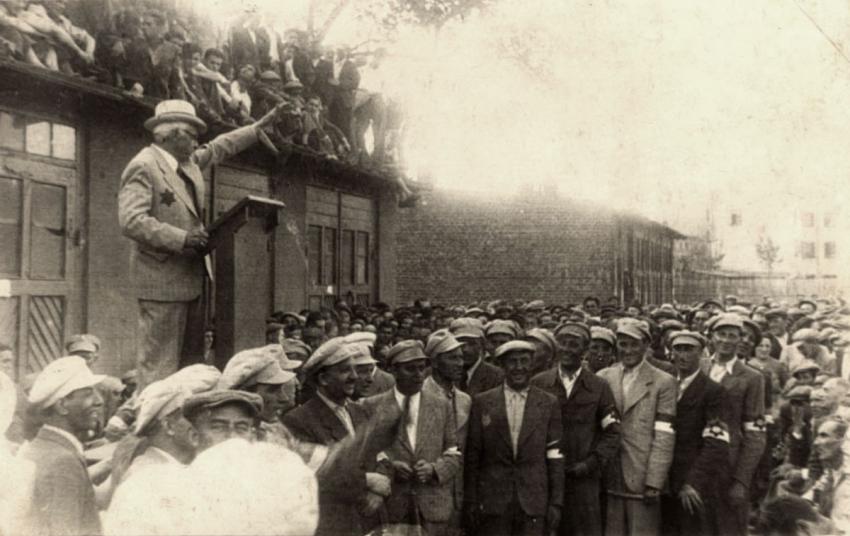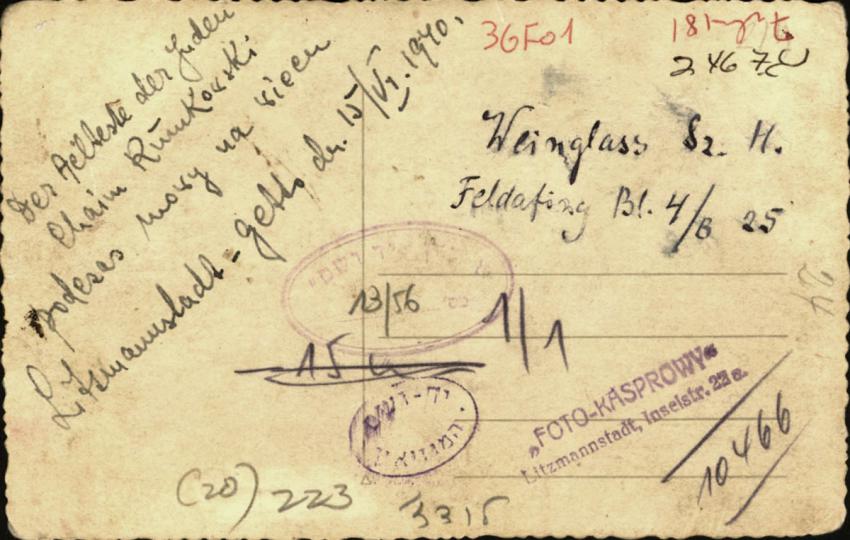Mordechai Rumkowski, head of the Judenrat in Lodz, Poland, speaking to a crowd in the Lodz ghetto on 15 June 1940. Rumkowski advocated a "salvation through work" policy, in which as many Jews as possible would work in German industries and thus ensure their survival. At the end of July 1944, the remaining 65,000 Jews in the ghetto were deported to the Auschwitz and Chelmno death camps.
On the eve of World War II, Lodz was the second largest city in Poland. The Jewish residents numbered some 250,000, approximately one third of the total population. Almost half of them made a living in crafts and industry, particularly in textiles. The vibrant Jewish community established cultural and educational institutions, and Jewish life flourished there.
In September 1939, with the German occupation of western Poland, many Lodz Jews were seized for forced labor, where they were terrorized and humiliated. In October, Mordechai Chaim Rumkowski was appointed head of the community. A community activist and Zionist representative on the community board, Rumkowski was one of the few leaders who did not leave the city. He appointed a Judenrat, but in November, when Lodz was annexed to the Warthegau, the Judenrat members were murdered along with many other Jewish community figures and members of the intelligentsia. The Jews of Lodz were divested of their businesses and made to wear the yellow star, and many synagogues in the city were torched.
In December, the deportation of the Jews of Lodz to the Generalgouvernement began, and tens of thousands, a third of the Jewish population, were deported, but the transports were halted due to the opposition of the ruler of the Generalgouvernement, Hans Frank. The establishment of the Lodz ghetto began in February 1940, and the city's Jews were forced to move into the ghetto, which was sealed in May. About one fifth of the ghetto's inmates perished as a result of the starvation, crowding, epidemics and biting cold.
The Jews worked in different factories in the ghetto, manufacturing products for the war effort. In early 1942, when the Germans started deporting the ghetto's Jews, Rumkowski claimed that work was the key to salvation, as those gainfully employed were saved, at least temporarily, from deportation to the death camps. Indeed, tens of thousands of Jews continued to work in the ghetto, even after the "Great Aktion" of September 1942. However, in the summer of 1944, the Lodz ghetto was liquidated, and almost all the remaining Jewish inmates, including Rumkowski, were deported to the extermination camps of Auschwitz and Chelmno. Some 1,000 Jews were left in the ghetto to collect all the Jews' belongings and transfer them to the German authorities. The Red Army liberated Lodz in January 1945. 7,000-10,000 Lodz Jews survived the Holocaust.
Yad Vashem Photo Archives FO136




